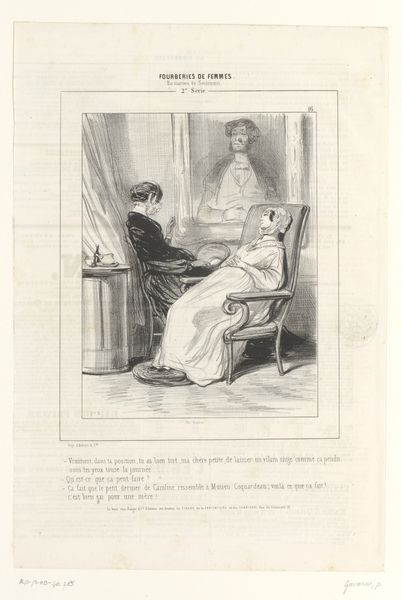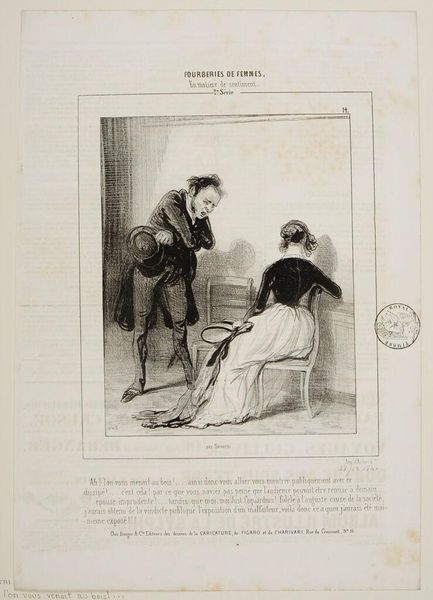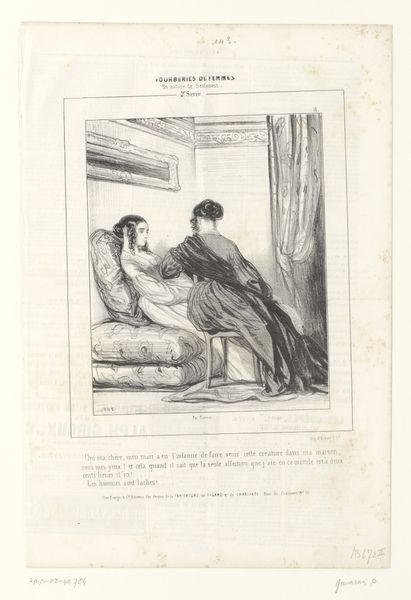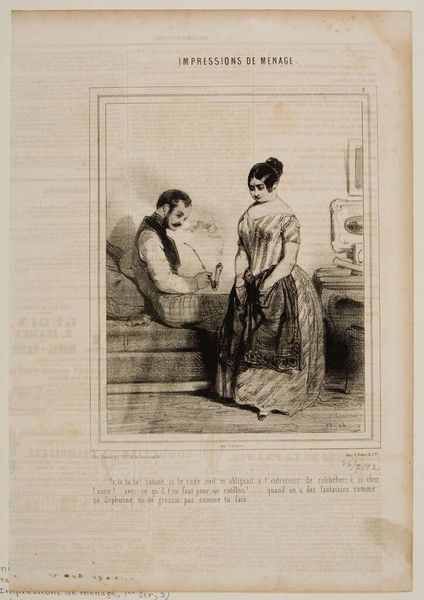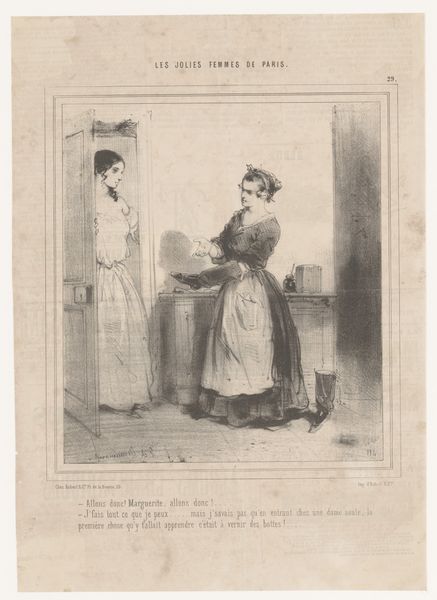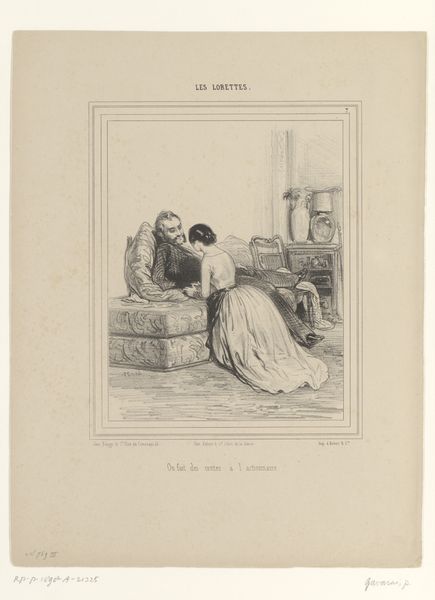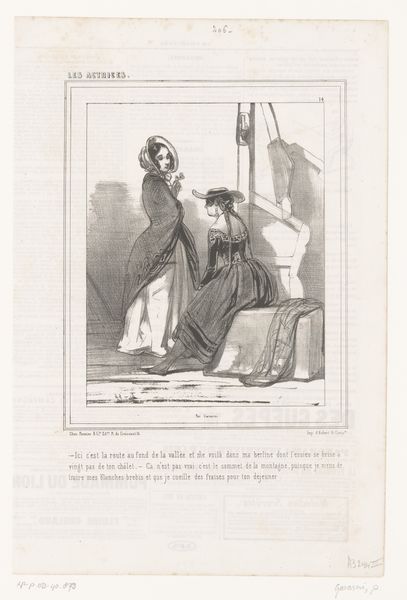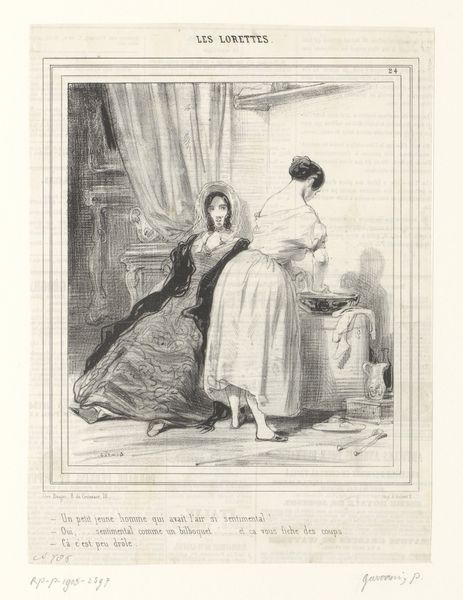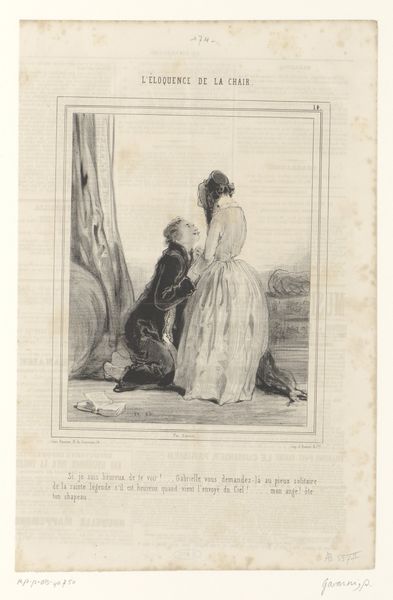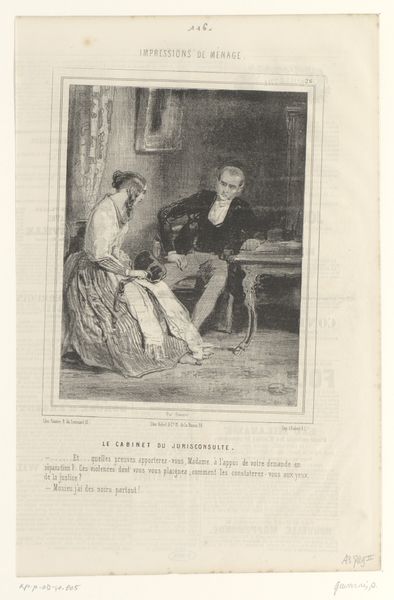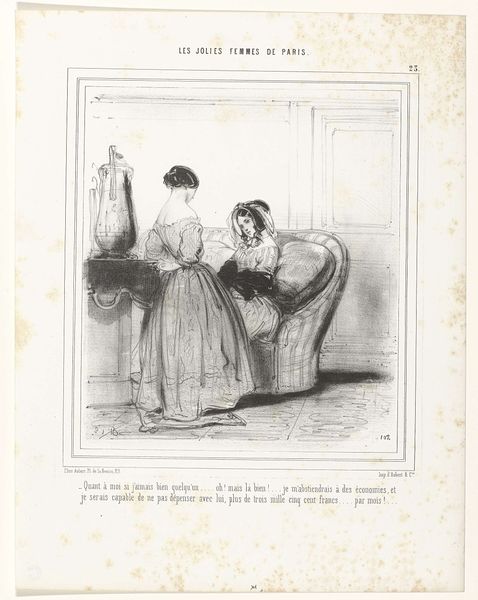
drawing, lithograph, print
#
drawing
#
lithograph
# print
#
caricature
#
figuration
#
romanticism
#
genre-painting
Dimensions: height 370 mm, width 253 mm
Copyright: Rijks Museum: Open Domain
Editor: This lithograph by Paul Gavarni, made in 1840, is called “Man vaart uit tegen zijn vrouw,” which I think translates to “Man complains to his wife.” It looks like a tense domestic scene, with the man quite agitated. What symbols jump out at you? Curator: My eyes are drawn to the averted gaze of the woman. In the history of art, we see the gaze used as a powerful conveyor of meaning – sometimes compliance, other times defiance. Here, her turned head, coupled with the man’s expressive posture, creates a push-pull dynamic. I'm wondering how Gavarni employs caricature here not just to entertain, but to convey psychological tension? Editor: That’s a great point, because he almost looks like he is performing, or maybe accusing. Curator: Indeed. This image operates on multiple levels. Consider how Romanticism, the style attributed to this piece, often deals with heightened emotion and the individual experience. What societal roles do you think Gavarni is highlighting and perhaps critiquing through this scene? Are these timeless struggles or specific to the era? Editor: Well, it looks like a well-dressed couple. Maybe it's a commentary on the roles and expectations within marriage during that time? The text underneath could be further clue about societal expectations. Curator: Exactly. The print originally appeared with text, and prints were made to disseminate information or opinions widely and cheaply, so text becomes vital to its immediate meaning and its interpretation by us, as viewers. I wonder how his audience at the time would have seen it, comparing his dramatic gestures to her quietness? Editor: So much is embedded in what seems like a simple image. Now I’m curious about what the caption really means! Curator: And that’s often the goal – to spark curiosity and encourage us to question the layers of meaning within a work.
Comments
No comments
Be the first to comment and join the conversation on the ultimate creative platform.
